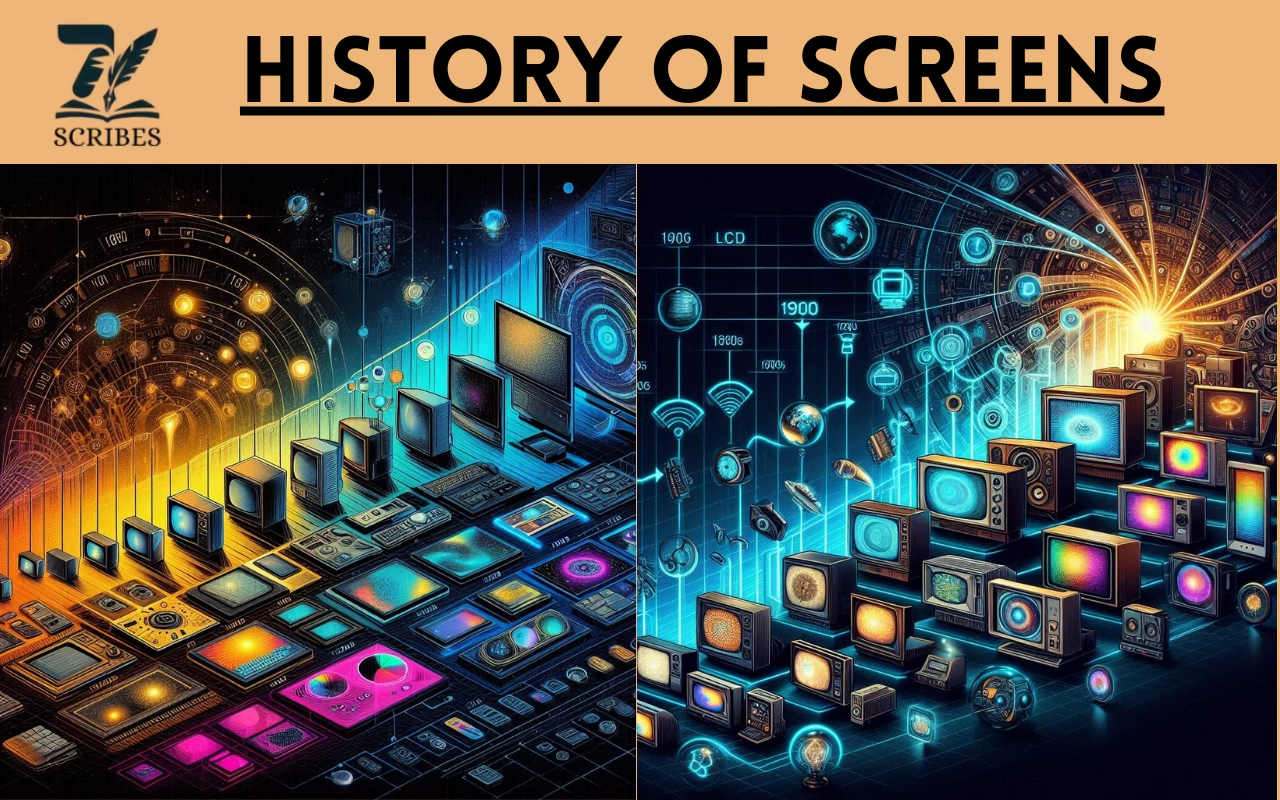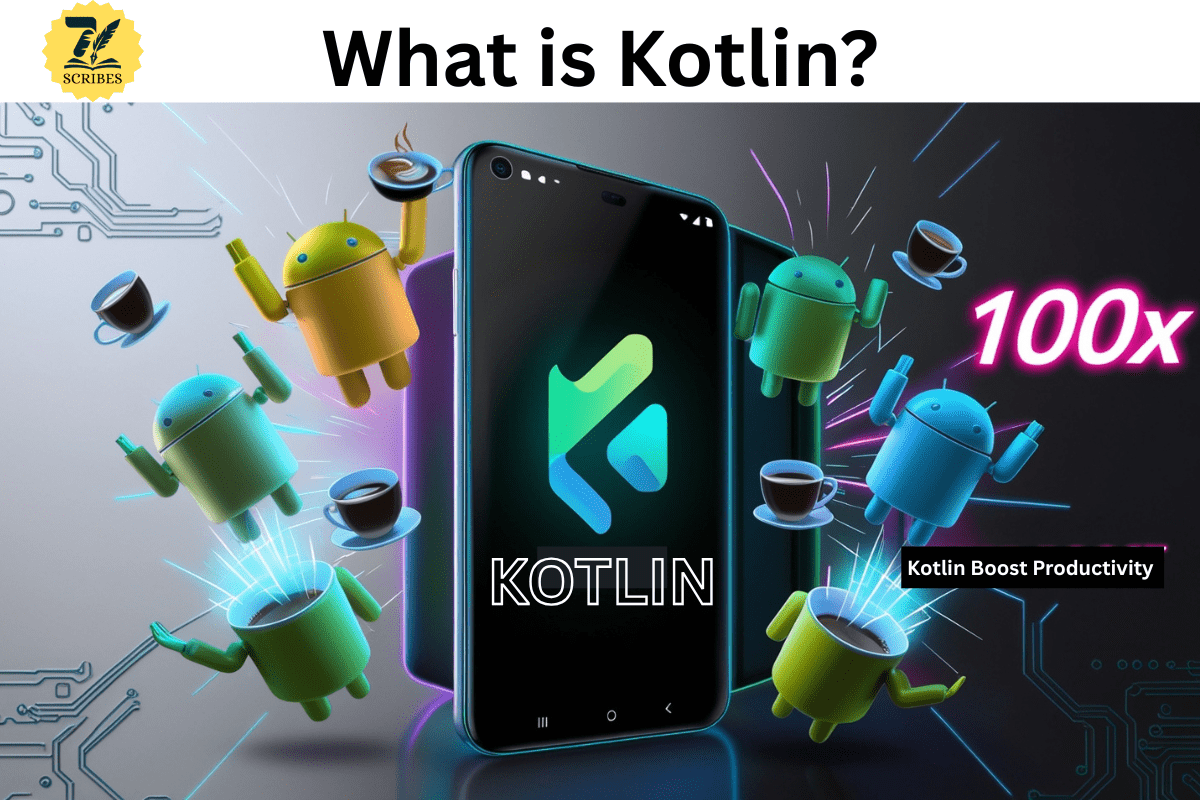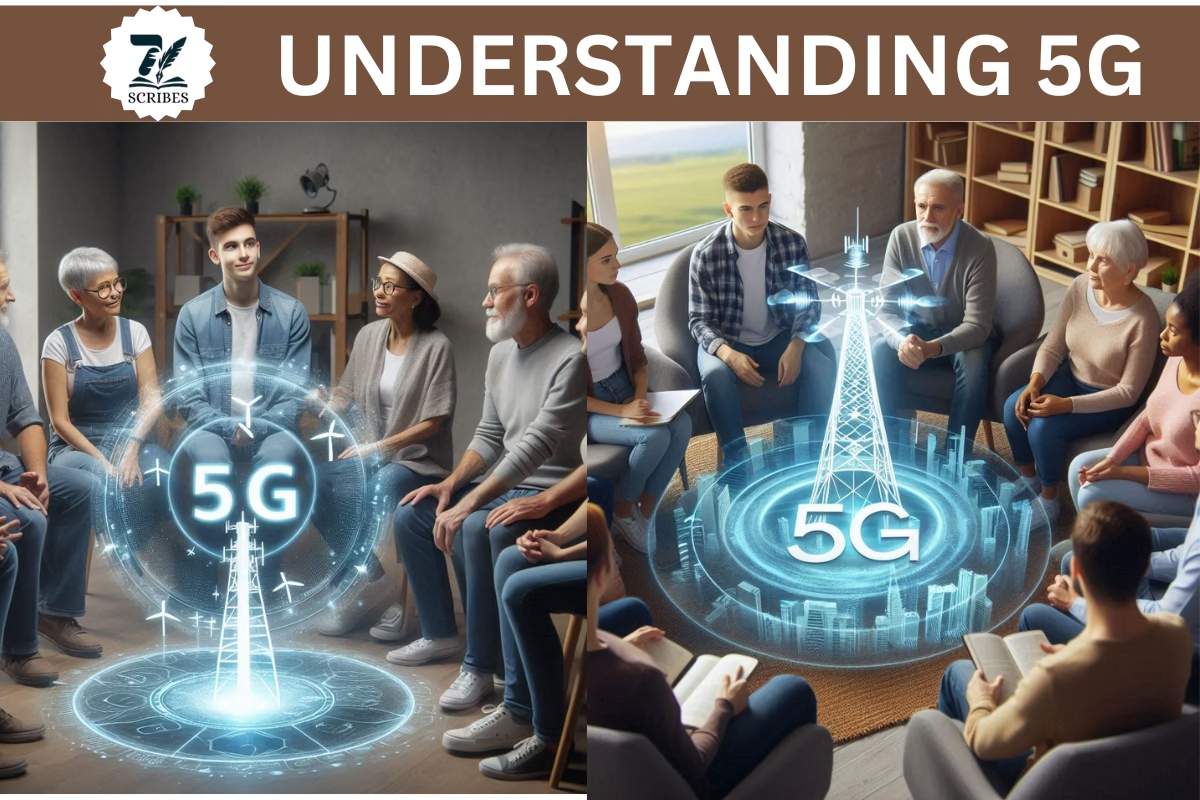This article clearly and completely explains the history of screens with the title ” Screens Through the Ages Visual Revolution”. In this, we will completely discuss the journey of screens from their birth to modern advancements in screen technology.
Definition:
The screen is defined as:
” Screen is a flat rectangular shape used to display information. Information including text, image, graphics, etc”.
Let’s explore the history of screens in “Screens Through the Ages A Visual Revolution”.
Screens Through the Ages Visual Revolution
The journey of the screen starts from the 17th century till now. With time the screen technology evolved and enhanced. As screens or visual displays become part of daily life either a touch of smartphones or smart devices. It also becomes the main component of TVs or laptops. First, let’s ask yourself some questions as you have never thought about the journey of screen technology. How and when it was invented? and how the latest screen technology shaped daily life.
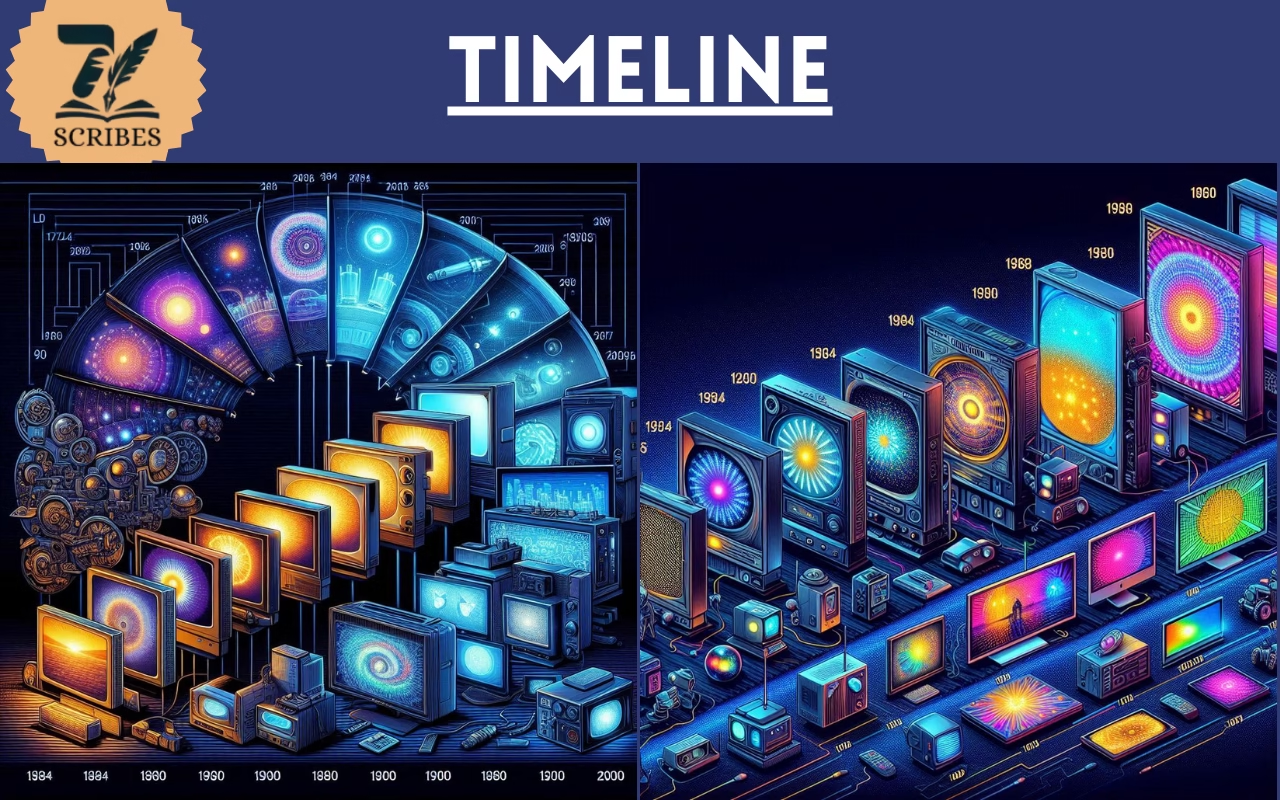
1. Invent and Early Optical Devices
Let’s discover the history of the screen. Before the birth of modern sciences, scientists or experimenters used to experiment with optical devices that could project images onto surfaces like walls, boards, etc. The work on these devices laid the foundation of modern screen technology. These devices invoke human curiosity about the screens, attracting the attention of massive audiences in a very short time.
a. The Magic Lantern (1650s)
The magic lantern was the earliest form of image projection device. It used three components to completely work
- Source Light
- Mirror (Concave)
- Painted glass slides
These three things are used to project images on the walls. It was invented in the 1650s by Christiaan Huygens.
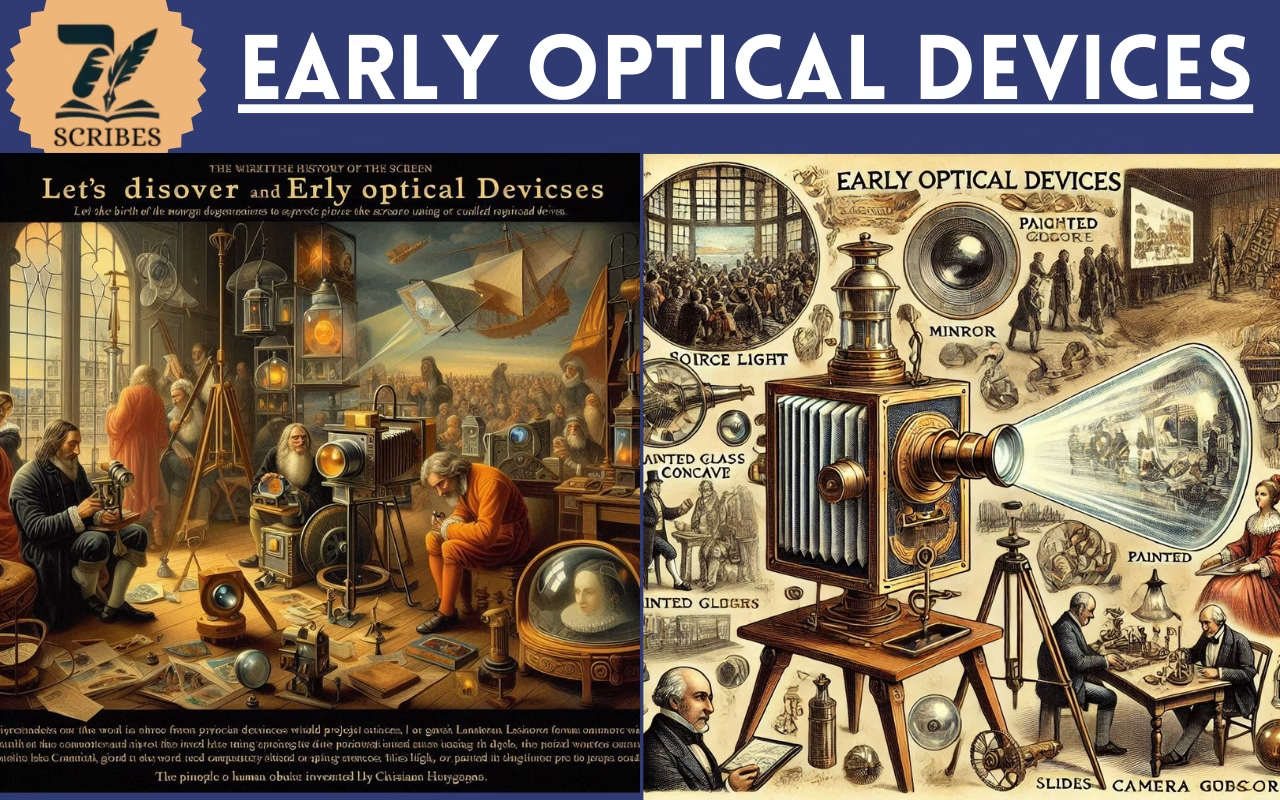
b. Camera Obscura
The word Camera Obscura is Latin, meaning “Dark Chamber.” It is one of the earliest inventions that could project real-world scenes using a small hole or lens onto the surface. The principle of the Camera obscure was described by Mozi China (5th BCE) and Aristotle(4th BCE). But the real implementations begin with the work of Muslim Arabic scholar Alhazen (Ibn al-Haytham), who describes the principles of optics and light.
2. The Revolution of Cathode Ray Tubes
The footsteps of CRT began when the first electron was discovered by J.J. Thomas in 1897. This discovery makes the screen technology more easy to evolve and enhance.
Birth of CRT
The work on the cathode ray tube was started in 1897 when it was invented by Ferdinand Braun. It was capable of emitting electrons onto a phosphores screen and creating images. initially used for scientific purposes like used in oscilloscopes. It became the backbone of televisions and computer screens. John Logie started working on mechanical television in the 1920s, followed by Farnsworth’s invention of the all-electronic devices in 1927, which aimed to create an environment for CRT-based Televisions. Later, it became commercially available in the 1930s. Initially, the screens are available only in black and white later it support the color display.
4. The Rise of Flat Screens
Over time, the CRTs-supported screens were gradually replaced by thinner, lightweight, and more powerful and efficient screens.
a. LCD (Liquid Crystal Display) Screens
LCDs use liquid crystals sandwiched between layers of glass or plastics. The displays used light to create images. It is thinner, lightweight, and more efficient than CRT screens. The first ever LCDs were developed in the 1970s by companies like Sharp. In the 1990s, it started to replace CRT screens and became the mainstream laptops, televisions, and monitors by the early 2000s.
b. Plasma Displays
The concepts of plasma display could be traced back to the 1960s when the research on plasma screens began. Plasma screens were introduced in the 1990s, which could provide larger display sizes, high refresh rates, wide viewing angles, color quality,y, and better image quality as compared to the early screens.
Plasma display use small cells filled with a mixture of neon and xenon (noble gases) and phosphorus coating. Then, the electrical charges turn these gases into plasma. Which results in emitting ultraviolet light that in turn triggers (excites) phosphors to emit visible light.
5. The Era of Modern Displays
Today screens are thin, lightweight, and easy to use, and the most important thing is they support various color displays.
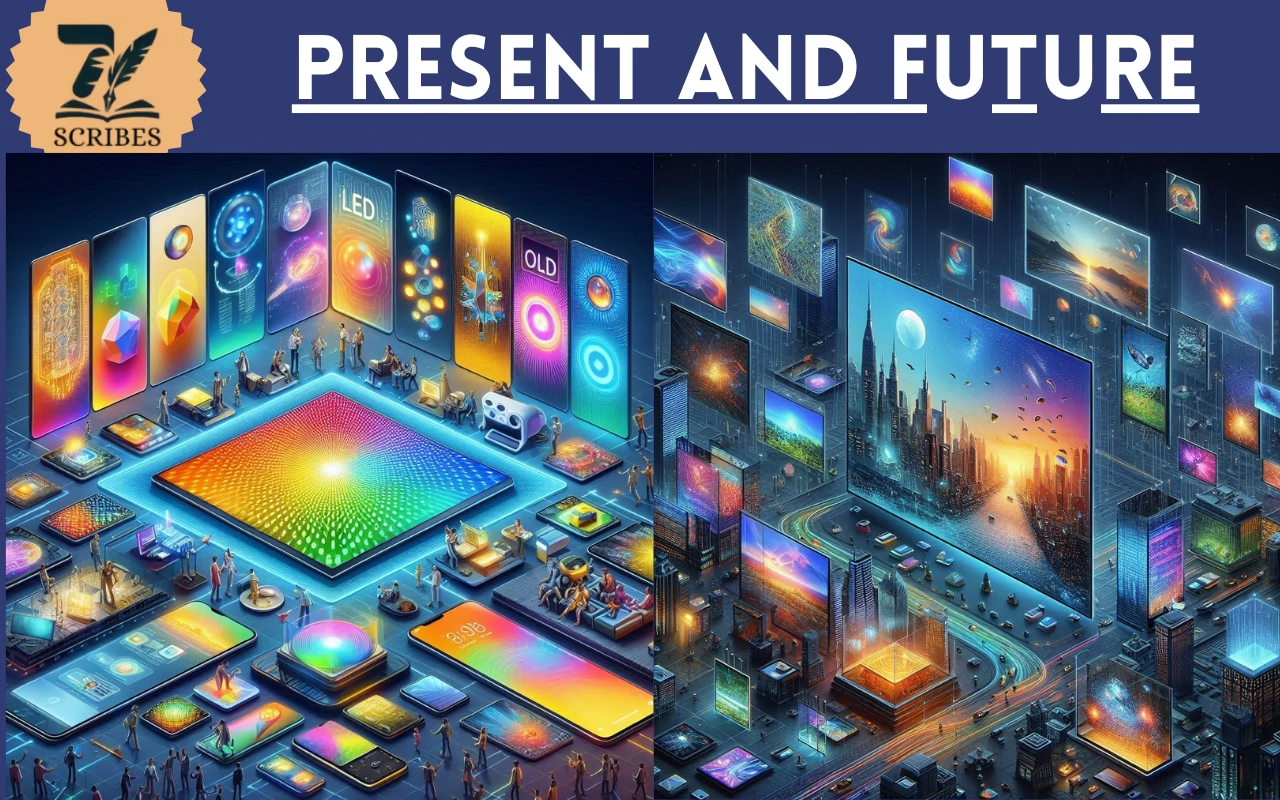
a. LED and OLED Screens
LED stands for Light Emitting Diodes developed in the 1990s. It revolutionized display technology with brighter images, more energy, and cost-efficient and thinner designs.
OLED stands for Organic Light Emitting Diodes. It uses organic compounds to emit light when electric current is applied. It also offers self-emissive pixels, delivering deeper blacks, vibrant colors, and better contrast. These features make OLED ideal for high-end TVs, smartphones, and gaming monitors. In the 2010s, OLED was considered the standard for premium displays.
b. Touchscreens
The touchscreen was introduced in the early 2000s and became very popular in a few years. In 2007, Apple launched the first-ever touchscreen. Today, most handheld devices have a touch screen. like smartphones, laptops, and tablets, etc.
c. 4K, 8K, and Beyond
4K, 8K, and other high-quality resolutions have now become the international standard for modern display screens, making screen-enabled devices more luxurious and also making the graphics, text, or messages clearer. These technologies are normally used in gaming monitors, virtual reality headsets, and high-end televisions.
The Future of Screens
As its legacy, the future of the screen is now more exciting and bright:
MicroLED Displays:
The Micro LED combining the LED and OLED, provides more brighter, scalability, and durability. Make it easy to navigate and useful.
Augmented Reality (AR) and Virtual Reality (VR):
With the advancement in technology, screens are now integrated with wearable devices that change the human perspective and use of screen technology.
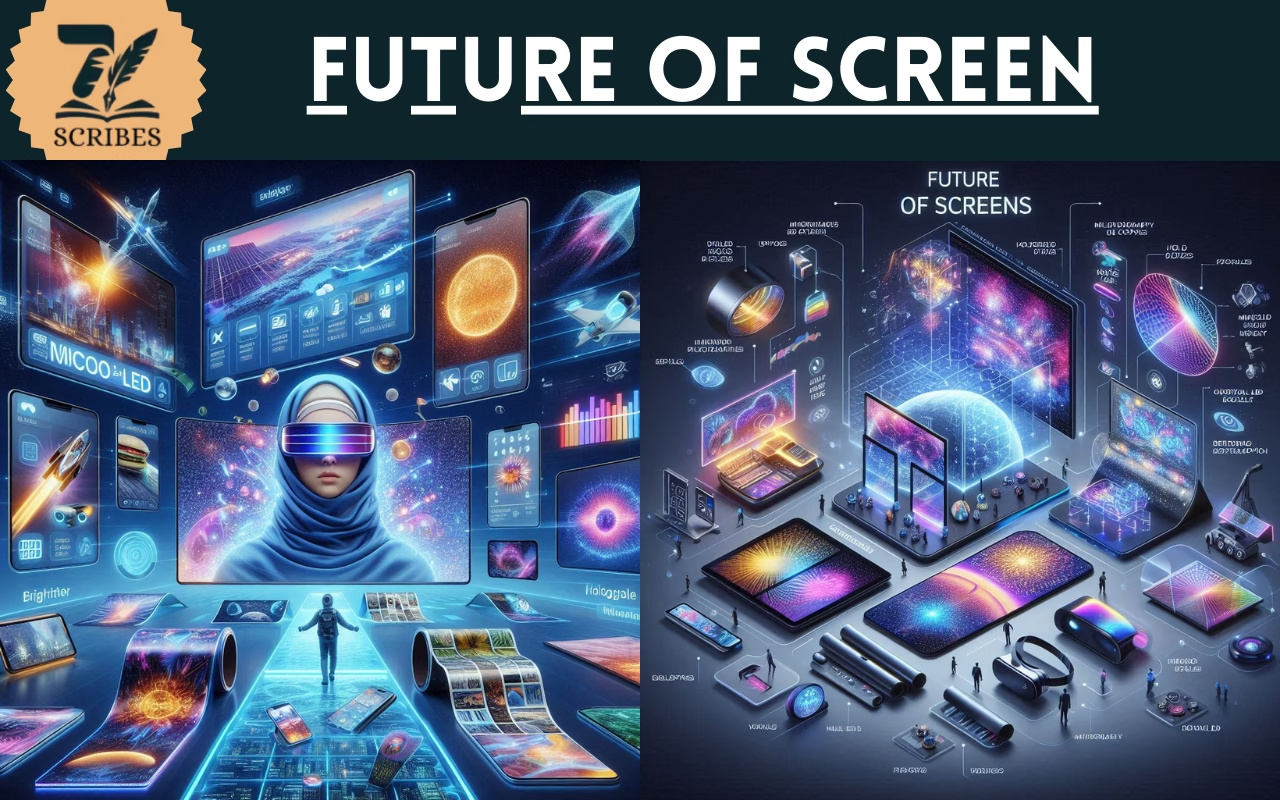
Holographic Displays:
Holographic technology is ready to replace 3D displays without using glasses and now started to become the part of mainstream.
Conclusion
This highlights the evolution of screen technology from early optical devices like the Magic Lantern and Camera Obscura to today’s advanced displays. It chronicles the rise of cathode ray tubes (CRTs) in the early 20th century, which laid the foundation for television and computer monitors, followed by the transition to flat-screen technologies such as LCDs and plasma displays in the late 20th century. Modern advancements like LED, OLED, touchscreens, and high-resolution displays (4K, 8K) have transformed screens into thinner, brighter, and more efficient forms. The future promises innovations like MicroLED, augmented reality (AR), virtual reality (VR), and holographic displays, further revolutionizing how we interact with visual technology.
FAQs on “Screens Through the Ages: A Visual Revolution”
1. When were screens first invented?
The history of screens dates back to the 17th century with the invention of the magic lantern in the 1650s by Christiaan Huygens. It was one of the earliest devices that projected images onto walls, laying the foundation for modern screens.
2. What was the role of the magic lantern in screen history?
The magic lantern used a light source, a concave mirror, and painted glass slides to project images. It captivated audiences with its ability to display stories and educational content, marking the start of visual displays.
3. How did cathode ray tubes (CRTs) revolutionize screens?
Invented in 1897 by Ferdinand Braun, CRTs used electron beams to create images on phosphorescent screens. They became the backbone of televisions and computer monitors from the 1920s to the 1990s.
4. What are the key differences between LCD and CRT screens?
LCDs are thinner, lighter, and more energy-efficient compared to CRTs. While CRTs use electron beams and phosphorescence, LCDs rely on liquid crystals and backlighting to display images.
5. How did LED and OLED technologies improve screens?
LED screens introduced brighter images, better energy efficiency, and thinner designs. OLED screens advanced this further with self-emissive pixels, offering vibrant colors, deep blacks, and superior contrast, ideal for high-end devices.
6. When did touchscreens become popular?
Touchscreens became widely popular with the launch of the iPhone in 2007. Today, they are common in smartphones, tablets, laptops, and even kiosks, revolutionizing how we interact with screens.
7. What is the significance of 4K and 8K resolution?
4K and 8K resolutions deliver exceptional clarity, vivid colors, and fine detail, making them the gold standard for high-end televisions, gaming monitors, and VR headsets.
8. What are foldable and flexible screens?
Foldable and flexible screens, like Samsung’s Galaxy Z Fold and LG’s rollable OLED TVs, use advanced OLED technology to create displays that can bend or fold, paving the way for innovative device designs.
9. What is MicroLED technology?
MicroLED combines the best of LED and OLED by offering unmatched brightness, durability, and energy efficiency. It is poised to become the next big thing in premium displays.
10. What is the future of screen technology?
The future includes advancements like AR/VR integration, holographic displays, and eco-friendly designs. These innovations aim to enhance user experiences while reducing environmental impact.
Read More:

